
There’s no doubting that the harpy eagle is a stunning creature with its expressive face, feathered collar, and black and grey tones. If its unusual look isn’t enough to wow, its height and wingspan are. These large birds of prey may grow up to 3 feet 5 inches tall and have a wingspan of up to 7 feet 4 inches, giving them the appearance of a puppet from Jim Henson’s Labyrinth.
The harpy eagle has become quite a famous icon on the internet due to its astounding size and distinctive look. People routinely post photos of the massive eagle on Reddit, where they marvel at its size. A female bald eagle may weigh up to 12 pounds, whereas a female harpy eagle can weigh anywhere from 13 to 20 pounds. It’s worth mentioning that a male harpy eagle will weigh between 9 and 13 pounds, while female eagles are always stockier than their male counterparts.
In terms of looks, males and females have the same black, grey, and white feathers, with elevated feathers on the head giving the bird a puzzled face. Take heed of the harpy eagle’s formidable talons if its gothic appearance wasn’t enough to scare you. The back talons, which measure 5 inches in length, are actually larger than a grizzly bear’s claws. No other eagle has talons as huge as this one. It should come as no surprise that the harpy eagle is at the top of its food chain, given its strength.
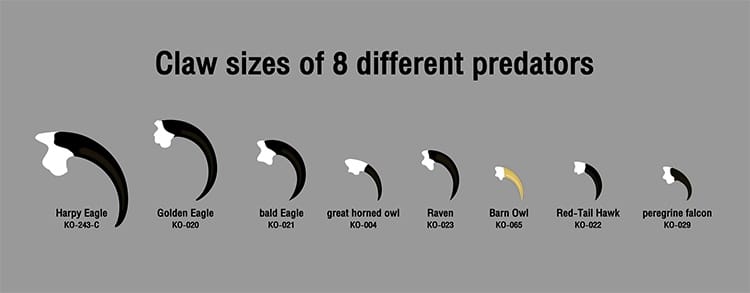
What do harpy eagles consume, exactly? This raptor prefers sloths and monkeys as prey. They don’t soar for vast distances very often. They have more than enough strength to lift up tiny animals weighing up to 17 pounds because they conserve their energy. These eagles are silent hunters that would remain in a perch for hours on end, just waiting for a food to pass by. With the ability to fly at speeds of up to 50 miles per hour, they can easily swoop down and snare their prey.
Unfortunately, as rainforest development reduces their habitat, harpy eagles are becoming increasingly scarce in Latin America. Because harpy eagles are monogamous and only have one eaglet every two years, even a small decrease in population might make recovery difficult. In some ecosystems, the extinction of this apex predator represents a major damage to the ecology. For example, their hunting of creatures like as capuchin monkeys serves to naturally keep populations in check. This is significant because these monkeys take eggs from bird nests and might lead to the extinction of other species if they are not controlled.
The harpy eagle is the world’s largest living eagle, with talons that are larger than a Grizzly bear’s claw.
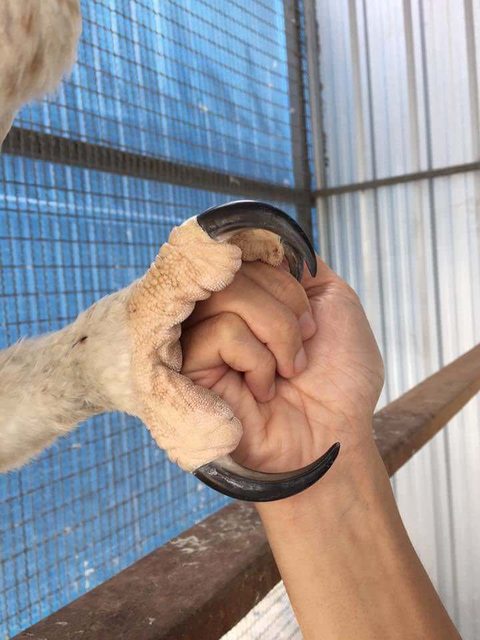
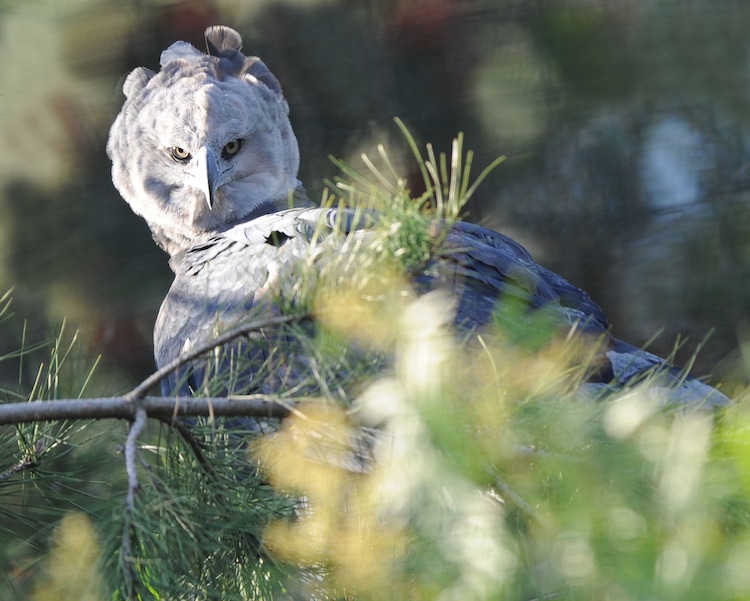
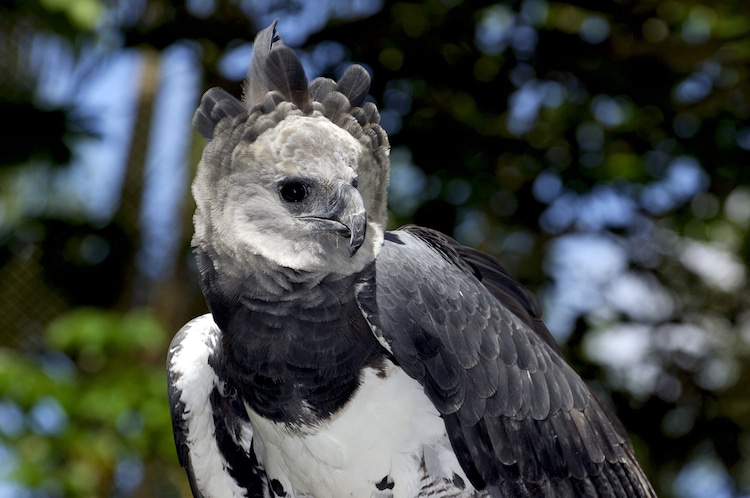
They are endemic to the high canopy of lowland rainforests, but deforestation is reducing their habitat.

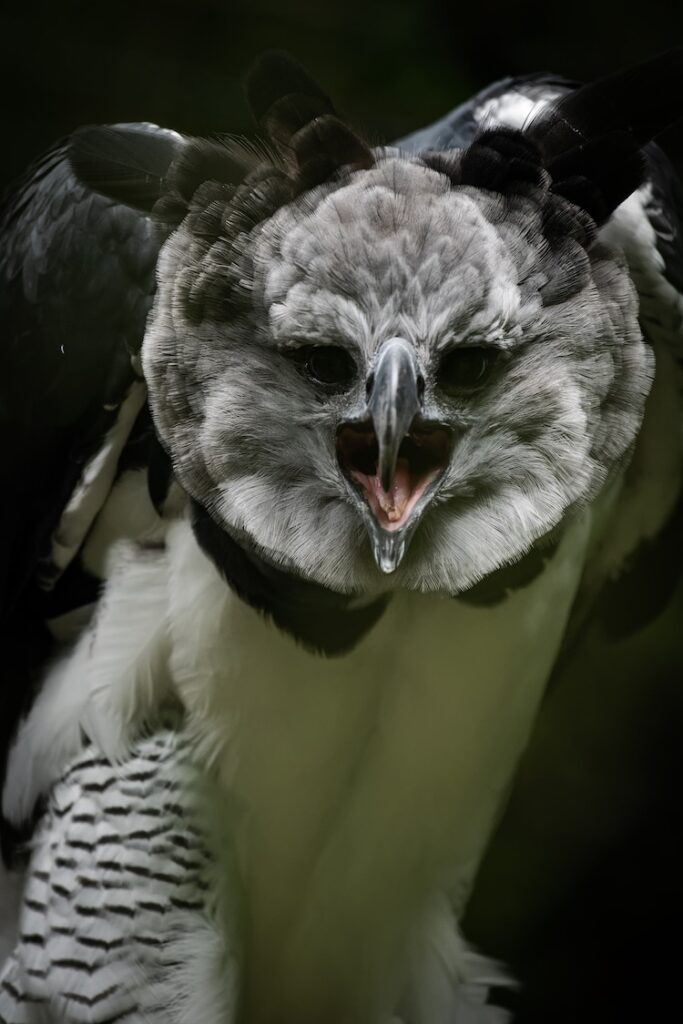
Many may now be found in North and South American zoos and environmental parks.
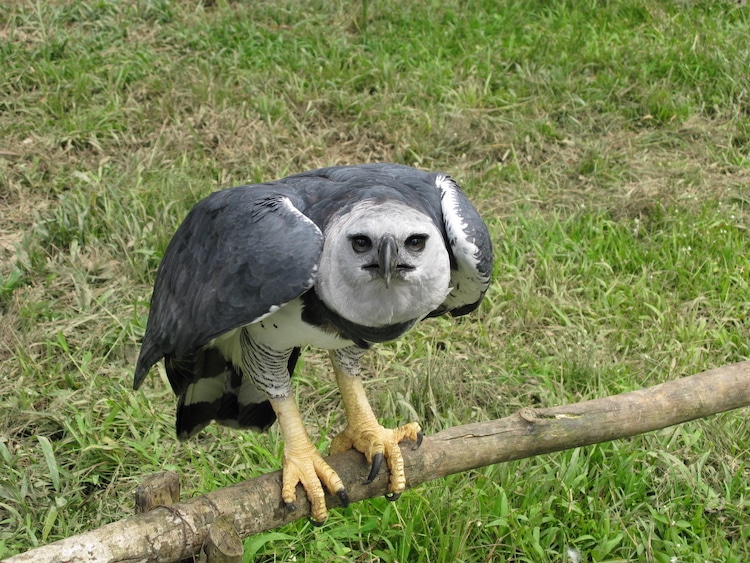
More Harpy Eagle Facts
- The first written record of the harpy eagle is in Carl Linnaeus’ 1758 Systema Naturae. He describes the bird as the Vultur harpyja, named after the Greek mythological spirit that had the body of an eagle and the face of a human. This is why many people think the bird is only a myth.
- Harpy eagles are the rainforest’s largest and most powerful bird.
- Harpy eagles and the African crowned eagles claim the title of the world’s strongest eagle.
- They are strong enough to crush bones with their talons. (They can apply over 110 pounds of pressure.)
- Harpy eagle nests are sparingly spaced out over large amounts of rainforest and well hidden up in the trees’ huge canopies. This makes them extremely hard to find and study.
- Their huge, durable nests made from sticks measure around 1.2 meters (3.9 feet) deep and 1.5 meters (4.9 feet) wide.
- Panama officially adopted the harpy eagle as its national bird.
- Although they’re birds of prey, there are some uncommon cases where harpy eagles have been attacked and eaten by ocelots and jaguars.
- Harpy eagles are known to “steal” livestock from commercial businesses, such as chicken, lamb, goats, and even piglets.
- Similar to an owl, harpy eagles move their facial feathers in order to direct sound waves to their ears and improve hearing.
- The harpy eagle was the inspiration behind the design of Fawkes the Phoenix (Dumbledore’s animal companion) in the Harry Potter film series.
